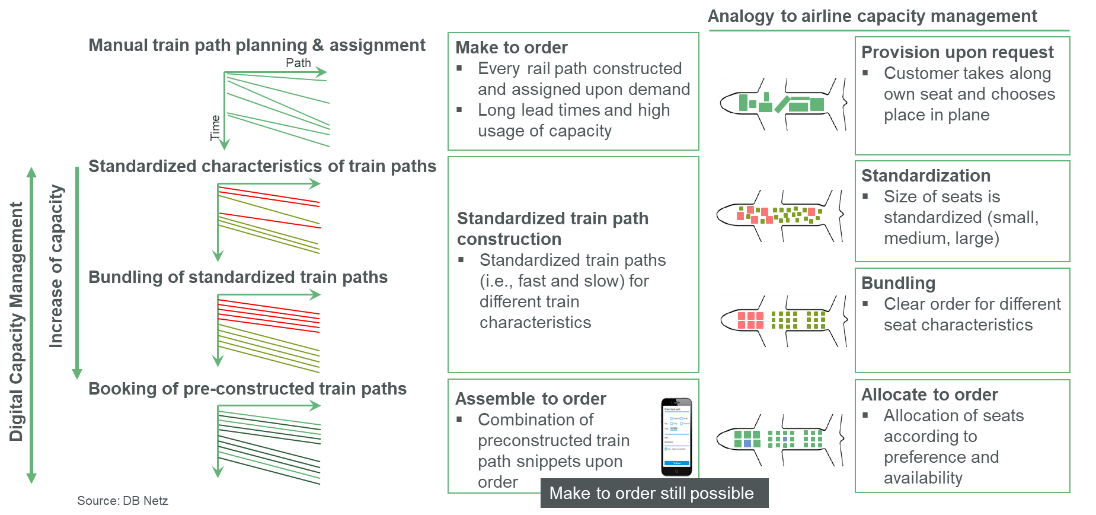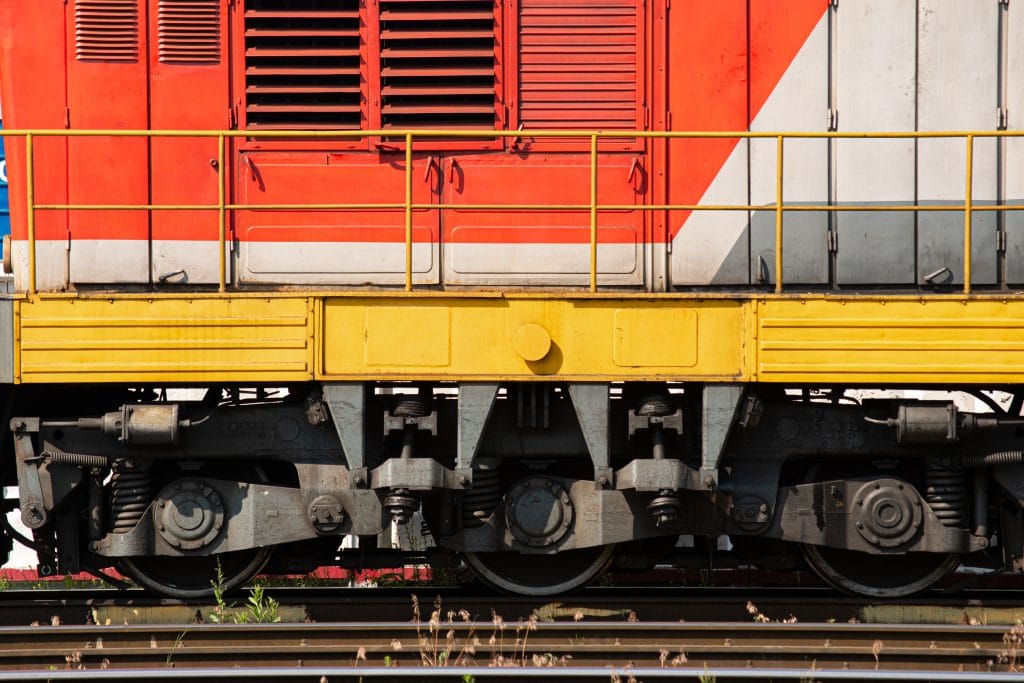A Rail Undertaking Perspective on European Digital Capacity Management
In this opinion piece Ulla Kempf, Head of International Resource Planning at SBB Cargo International AG and Member of the Railfreight Forward Initiative, reflects on the role of digital capacity management in optimising infrastructure capacity and asset utilisation, and thereby supporting the European Commission's modal share objectives for rail freight.
This opinion piece by Ulla Kempf, Head of International Resource Planning at SBB Cargo International AG and Member of the Railfreight Forward Initiative, originally appeared in the European Transport Regulation Observer ‘The Governance of Rail Freight Corridors‘ (January, 2021).
Increasing modal shift from road to rail will be one of the crucial cornerstones to transform Europe into the first carbon-neutral continent by 2050 – the European Commission’s objective in the Green Deal[1]. Achieving 30% of rail modal share in freight would contribute to these targets with 25 million tons of avoided emissions of CO2 equivalents and approximately €25 billion in avoided external costs from 2030 onwards[2].
To boost this growth, Railway Undertakings (RU) need to offer competitive services to the market, which requires to make running international trains ‘as easy as running trucks’. Infrastructure Managers (IM) need to provide sufficient infrastructure capacity in quantity and quality to create space for growth.
Transparency and access to capacity, in particular infrastructure capacity, need to be simple, digital and without time delay. In this regard, today’s management of capacity is outdated. Heterogeneous and dispersed systems[3] as well as traditional processes for capacity management in Europe are not matching up with short term and flexible market needs any more. Instead, they lead to ‘a’ technically possible solution for ‘a’ timetable by manually constructed ‘make to order’ train paths, which cannot yet be optimised due to technical and timely restrictions. Often these offers are therefore suboptimal (cross-border international) train paths for freight with long and non-synchronised lead times for booking.
In general, capacity is the most expensive and not infinitely extendable resource we have in the rail sector and therefore it has to be used most efficiently.
Digital Capacity Management (DCM) will address those challenges. It industrialises the process of rail path planning and assignment by standardising, automating and optimising small capacity units. Transparency and access to capacity will become digital. Planning and dispatching systems / organisations can communicate digitally and without time delay allowing seamless offers across national and organisational borders. Finally yet importantly, optimisation of infrastructure capacity and asset utilisation will become possible.

Through digital representation of infrastructure, including daily construction activity, train path capacity and quality can be maximised with optimisation algorithms in the perspective of National or European Networks. The use of adaptors allows to keep existing legacy IT-systems for timetabling and therefore keep investment costs low[4].
The effects are promising. DB Netz’ best practice example resulted in a higher supply of capacity on current infrastructure: ~ + 4% 4,[5]. On average, less travel time is required: ~ – 6% due to optimised train paths saving resources on the IM and RU side4. The replacement of slow made-to-order processes with digitised, industrialised processes allows path offering times of approx. 1 hour instead of 30 working days as well as a step-change in process quality in terms of conflict elimination (e.g., infrastructure works), speed, etc. Overall more transparency on available capacity is possible and therefore enables the implementation of long-term as well as multi-annual timetables as required for TTR (Time Table Redesign project of RailNetEurope). In addition, DCM is providing a means for more efficient investment planning of physical infrastructure investments through a comprehensive digital representation of infrastructure for SERA (Single European Railway Area). Coming into full effect RUs estimate a better utilisation of drivers and locomotives through DCM, due to optimised round trips and reduced synchronisation times at borders of up to 15% and possible energy savings of up to 10% due to less consuming stops for rail freight[6].
DCM offers the facility for a hierarchical, international, cross-border capacity planning within Europe. To ensure seamless European rail freight flows it is an absolute necessity that the overall process of dimensioning – planning – and safeguarding capacity will be aligned accordingly. A European capacity model defining required freight transport capacity along the vision of modal shift is needed and to be coordinated between Member States, IMs and Allocation Bodies to guarantee harmonised capacity[7]. Through DCM our sector will receive the means to do so and act accordingly.
To make this happen, IMs, RUs and Authorities need to act now. The current structures in rail are neither incentivising investments in digital measures nor in cross-border optimisation. A possible way to overcome this predicament is by treating investment in DCM as equivalent to investment in new physical capacity and by financing it through corresponding means. Elevating digital investments to level playing field with physical investments, lower investment needs and shorter lead times will incentivise governments and IMs to invest with high returns in capacity. This could serve as an unlocked opportunity to remove or at least reduce significant bottlenecks on Europe’s most exploited network parts until physical infrastructure is built.
[1] European Commission, “Handbook on the external costs of transport”, (Version 2019 – 1.1)
[2] Green Book, Rail Freight Forward Initiative
[3] 28+ legacy infrastructure management systems in Europe
[4] Source DB Netz project NEXT, click & ride
[5] 4% on 50% of the European Railway Network equivalents into approx. €16 bn of physical investment saved
[6] Green Book, Railfreight Forward Initiative
[7] New capacity allocation rules on routes with capacity shortage according to defined capacity needs are additionally necessary to sustainably ensure the international rail freight capacity needed






